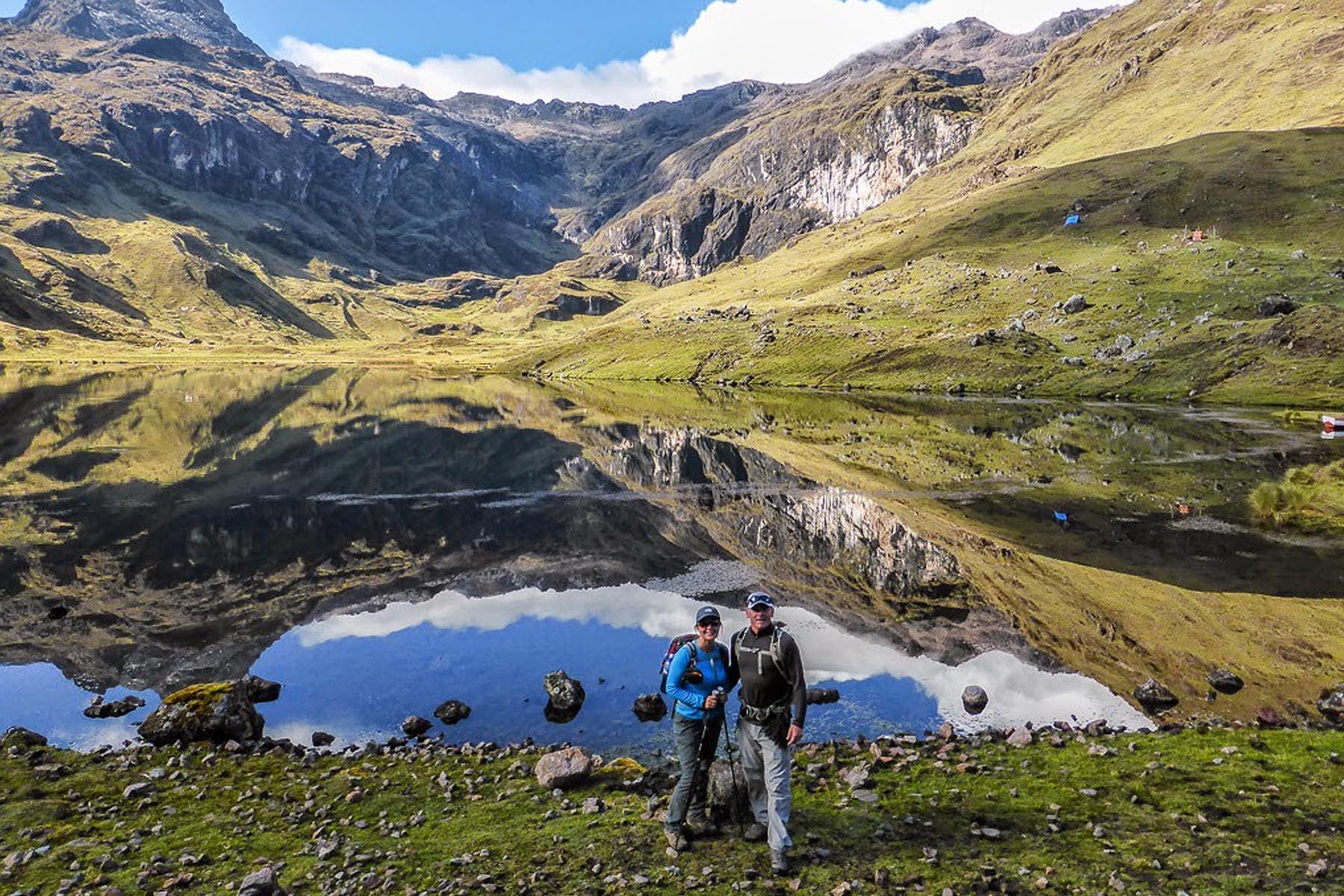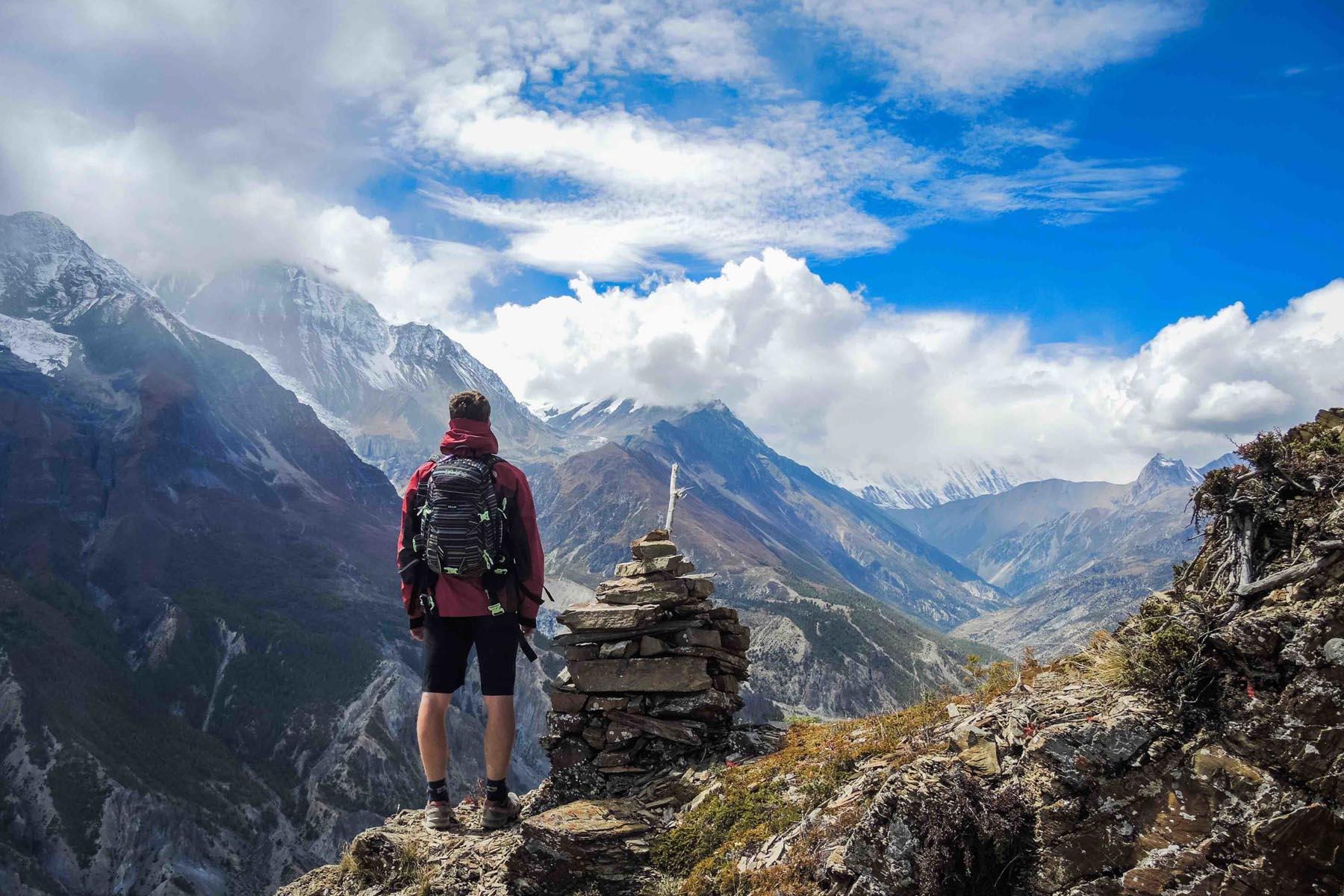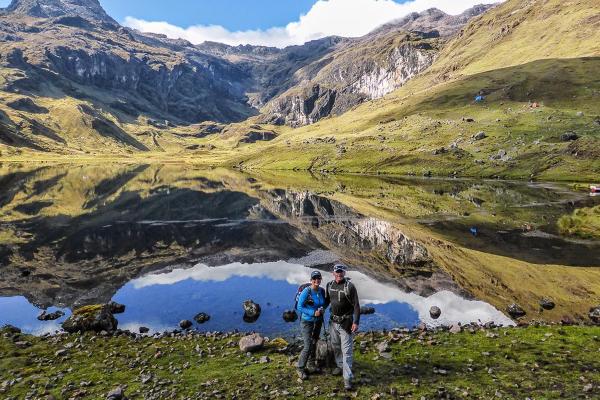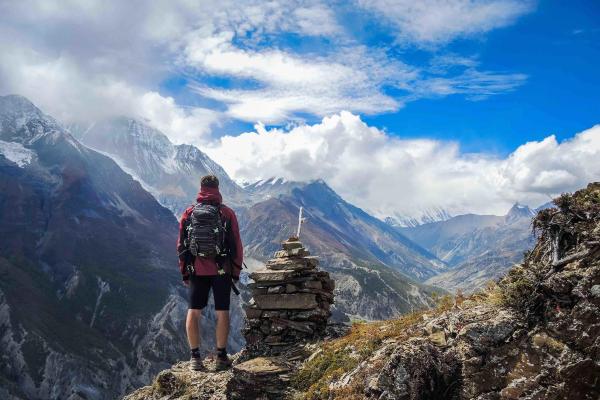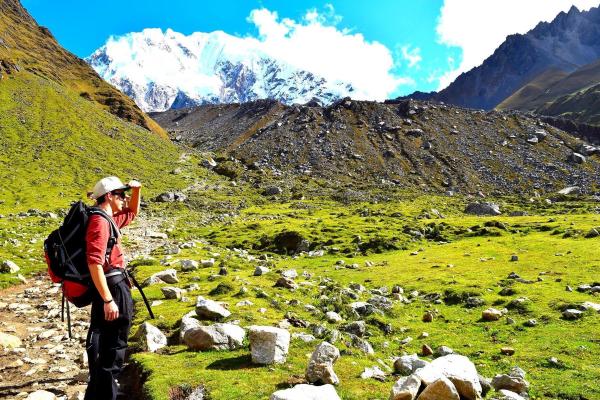Short Salkantay Trek To Machu Picchu Cheap
$0.00/From
Salkantay, after the Ausangate, is the second highest mountain in the department of Cusco.Also known as Apu Salkantay, snow capped peak of Peru located in the department of Cusco; It constitutes one of the main elevations of the Vilcabamba Mountain Range, an extension of the Eastern mountain rain, a mountain branch of the Peruvian Andes. It reaches an altitude of 6,271 meters. It presents two summits covered by snow, known as China Salkantay and Salkantay female, separated by a port that opens to the Santa Ana Valley in the province of Urubamba. Both the mountain pass and the fluvial course that is born there are called Salkantay. This river pours its waters into the Urubamba on its left bank .When one travels along the road from Limatambo to Cusco, the Salkantay with a height of 6,271 meters appears imposing above the other mountains of the Vilcanota mountain range. Its importance lies in being one of the access routes to the high forest of Santa Teresa and in its snow, source of life for the valleys below, which makes it one of the mountains or apus tutelary of Cusco. To make the trek, you have to go first from Cusco to the old Mollepata farm, crossing part of the road to Abancay. The natural heritage constituted by elements that nature has created over thousands of years and that is represented by the variety of geological, physiographic formations that together they are part of the scenic beauty of the heterogeneous environment, in which the different ecosystems, plant formations with the diversity of flora species, which in turn are bitat of the variety of species of fauna characteristic of the area and constituted by all those elements and tangible or intangible manifestations produced by the companies, the result of a process; where the reproduction of ideas and material are factors that identify and differentiates Salkantay's natural space as a cultural landscape, evidenced in its different manifestations and cultural expressions from a territorial dimension illustrating this adventure at one of the most unforgettable experience.
Quick Itinerary:
- Day 01: Cusco - Challacancha - Soraypampa
- Day 02: Soraypampa - Salkantay Mountain - Huayracmachay - Chaullay
- Day 03: Chaullay - Playa Sahuayaco - Local Bus to - Hidrolectrica - Aguas Calientes
- Day 04: Aguas Calientes - Machu Picchu - Cusco
Salkantay trek.
- Weather of the snowy Salkantay: It is very sunny during the day, but a cold at night. The temperature falls below 0 ° C at night during the months of June to September. In the season from December to March is very rainy reason why it is not very advisable to go on these dates. The best time for the weather, to do this walk is during the months of March to September.
- Height of the walk to the snowy Salkantay: This trek reaches a height of 4,600 meters above sea level at its highest point this on the slopes of the same snowy Salkantay. Enter Snow Walk Ausangate 5D to perform this walk.
- Location of the snowy Salkantay: The Salkantay Route, also known as the "New Inca Trail", is located north of the city of Cusco, following the Cusco - Limatambo - Abancay - Lima highway, making a detour past Limatambo until reaching Mollepata.
- Conditions to Salkantay Trek:You will not have any problem to complete this route whenever you are in good health, are moderately fit and are used to walking. If, on the other hand, you do not walk regularly, you can always do a little training prior to your trip.
- Recommended age: Any age is ideal for this excursion as long as it has a reasonable physical shape have no problems walking. Children under 10 years of age who take part in the Walk to Salkantay will be under the responsibility of their parents
Where the name of the Snowy Salkantay comes from?
The name of this mountain is a contraction that comes from Salga = sullen or wild and Antay produce celajes or avalanches. The name of Apu, which in the Quechua language comes to mean lord, is usually defined in front of the great mountains that mean something sacred above the valleys. For example Apu Salkantay in the Vilcabamba mountain range. The great and white Apu. A bit of stories between ropes and crampons: The Salkantay is one of the highest mountains of the Qosco region (Cusco) the highest mountain is the wild snow Ausangate with 65 meters more in the Vilcanota mountain range located further south. Nevertheless and without hesitation, it is the grandest in its splendid isolation and the greatness of its two-headed mole, with the addition of being one of the mountains of this magnificent Andean region that present major technical problems in all its aspects. This is attested by the six itineraries open to date by the different aspects of this white giant. Its conquest dates from the year 1952 by the Swiss cordate composed by Bronimann and Marx. This first ascent, like so many others in the history of mountaineering, is involved in various contradictions, since a few days later it is promoted again by a Franco-American expedition in which the well-known and outstanding mountaineer of the time was listed Claude Kogan . Modern statistics give the merit of being the first woman in the top to the Italian Consuelo Bonaldi who on August 4, 1978 rose East Crest accompanied by G. Marconi, A.Monononi, F.Nodari, S.Castellani, Augusto Zanotti and M .Quatrinni, but this is wrong, since Claude Kogan did it 26 years before. The summit of the Salkantay presents two peaks, the East and the West, formerly the West, more slender and attractive than the East was slightly higher when crowned by a serac. After the passage of years and the collapse of this serac, as noted by the prestigious Pireneur Louis Audoubert, the height is practically identical on both summits.
Conquer the sacred snowy Salkantay:
Both the trekking fanatics and the adventurers who go for the first time will recognize the majesty of the sacred snowy Salkantay and its 6271 meters of altitude. Its snow-capped peaks and the Andean landscape as well as the challenger are worthy of any cover photograph. The highest pass during the road is 4650 meters of altitude. Conquering such a height is a privilege for the most intrepid and challenging. Do you dare to go through rough roads and a lagoon to get to Salkantay?
Get to know the Inca culture up close: "the apachetas"
When you reach the Salkantay pass, you will notice an atmosphere of mysticism in the place and we are sure that you will be curious about the piles of snow-covered stones that can be seen everywhere in the Salkantay pass. The apachetas are offerings made by the walkers to the apus, the sacred Inca mountains and the Pachamama, the mother earth. Before continuing, the guide will make an offering of the best coca leaves to ask for protection during the trip and as thanks. Apachetas are considered sacred, so you have to be careful with them. Do you want to see this ritual more closely?
Machu Picchu Tour:
Machu Picchu is an Inca city surrounded by temples, platforms and water channels, built on top of a mountain. Its construction was built with large blocks of stone joined together, without the use of amalgam. At the moment it is considered cultural patrimony of the humanity when being recognized like important political center, religious and administrative of the Inca time.
- Location Machu Picchu: The city of Machu Picchu is located in the highest part of the eastern Andes (high jungle area) on the Urubamba River and northwest of Cusco, 2,300 meters above sea level (7,546 feet)
- Distances to Machu Picchu: From Cusco: 112 Km. (70 miles) From Lima: 1,277 Km. (794 miles)
- Population in Machu Picchu: 1,216 inhabitants (local) and 1,000 daily visitors (approx.)
- Climate of Machu Picchu: The average annual temperature is 16 ° C and the annual rainfall is 1500 mm and 3000 mm at low altitudes. At 2,500 meters altitude the average low temperature is 10.2 ° C, and the annual precipitation is 2170 mm. The dry weather season lasts from May to September and the wet weather season from October to April.
Important data:
- Declared a Cultural and Natural Heritage of Humanity by UNESCO, being considered as an important religious, political and administrative center of the Inca period.
- Machu Picchu was interconnected with the entire Inca Empire through the Qhapac Ñan, known route of the Inca roads.
- Its temperature ranges between 6.2 ° and 29.5 °, since it is located in a subtropical zone. Its rainiest months are from November to March.
- Its majestic architecture comprises some 140 structures throughout the citadel.
- The average altitude of the citadel is 2 450 m s.n.m.
- The mountains of Huayna Picchu and Machu Picchu are ideal for panoramic photographs of the entire architectural complex.
- Its discovery is due to the researcher Hiram Bingham III who was looking for the last capital of the Vilcabamba Incas.
VISIT MACHU PICCHU:
- Inca Citadel Machu Picchu: Archaeological Sites It is a place full of mysticism, it is a monument to the divinity, where man really feels like a creature of the gods, the overwhelming look of his spirit, seems to transport him to a magical place where anything is possible, in an unimaginable way . It is a place where the strange forces of nature transport you to an incomparable cosmic state, a state that can only be experienced in Machu Picchu. It is one of the most famous archaeological centers in the world, and therefore, the most visited tourist attraction in Peru. Chosen as one of the 7 New Wonders of the World - July 2007
- Historic sanctuary of Machu Picchu Natural and Cultural Heritage of Humanity (UNESCO-1983): The park was created to protect the landscape of the well-known archaeological site of Machu Picchu, founded by the Inca culture. It is believed that it was an Inca royal residence and was perhaps the coca collection center of the surrounding plantations. The site finally fell into ruin, was covered by the jungle and invaded, and lost to science "until its re-discovery in 1911. There are also remnants of the Inca Trail, local legends, including that of the spectacled bear, which was thought who served as a messenger between the spirits of great heights and those of the jungle.
- Machu Picchu Site Museum - Manuel Chávez Ballón Site Museum: The Historic Sanctuary of Machu Picchu, reaches the objectives of preservation and dissemination of cultural and archaeological research. Within a modern and dynamic exhibition, the reopening of the Manuel Chávez Ballón Site Museum has made it the most important means of communication and cultural information for the Historic Sanctuary of Peru.
More Tours at:
- Peruvian Festival
- Lares Trek to Machu Picchu
- Cachicata to Machu Picchu
- Choquequirao Trek
Tour Plan
Day 1: Cusco - Molletapata - Soraypampa
We will pick you up at your hotel at 05:00 hrs. - 05:30 hrs. with the transportation of the agency to travel for approximately 2 hours and 30 minutes, during the route we will observe beautiful views of the mountains that surround the Cusco Valley including the mountain of Salkantay and several high Andean towns and extensive areas of potato and corn cultivation . We will arrive at the town of Mollepata (2,900 m / 9,514 ft) in this town we will have the option to make the last minute purchases (ponchos, batteries, sunscreen, etc.). Then we will take the transport again to travel for an hour to Challacancha (3,675 m / 12,057 ft) during this short tour you will observe the impressive valleys of Mollepata. In Challacancha we will meet all our road team (cook, muleteers, horses) will give us a warm welcome and then prepare for our adventure in the mountains we have the option of putting the backpack on the horse, then we will walk for 3 hours during our hike, we will observe the Humantay Snow (5,917 m / 19,413 ft). The place to walk is Andean flat to acclimatise better for the rest of the way. Arriving at our campsite Soraypampa (3,850 m / 12,631 ft) we will observe the impressive mountain of Salkantay, in the camp our team will be waiting for us and then proceed to have a New Andean lunch, after enjoying lunch we will have a nap for 30 minutes and then start our hike to the beautiful lagoon of Humantay 1 hour and a half approximately in ascending way to the Humantay lagoon we will have time to enjoy the beautiful landscape of the lagoon and the glaciers in the mountain, then descend for 1 hour to the camp, we will arrive to Tea time where we can talk with the group, then enjoy dinner and finally rest.
Day 2: Soraypampa - Huayracmachay - Chaullay
The day starts early, then enjoy a good breakfast we will prepare to undertake the most difficult walk of the way, we will put our luggage in order and start walking for about 1 hour to the site called Salkantaypampa (4,100 m / 13,451 ft), here we will have a short break and continue walking uphill for 1 hour to the place of Soyrococha (4,400 m / 14,436 ft) ideal time to rest, rehydrate and enjoy the snack. The road continues for 1 more hour to the highest point of the Abra Salkantay trek (4,632 m / 15,197 ft) the highest point is located between the 2 imposing snow peaks of Humantay (5,917 m / 19,413 ft) and Salkantay (6,271 m) / 20,574 ft) - "The wild mountain" in the Quechua native language, on this site we will observe the snow-capped glaciers of Salkantay, the magnificent view of the entire mountain range and observe an original Inca Trail, which over the years It was collapsing. Then, we will descend for about 1 hour and 30 minutes to Wayracpampa where our team will be waiting for us with lunch. After enjoying lunch we will start the descent to the cloud forest and observe the change of weather and vegetation, we will go down to Chaullay where our camp will be, here we will have tea time and dinner. And so ends the longest and hardest day of the walk.
Day 3: Chaullay - Playa Sahuayaco - Bus a Hidrolectrica - Aguas Calientes
We will get up very early, have breakfast and start our walk. This day will be unforgettable because along the way we will see a lot of flora and fauna, the road is Andean flat; by parts we will go up no more than 100 meters and the rest of the way is lowered. We start from the place of the camp, we will walk for 40 minutes to the Town of Collpa (2,850 m / 9,350 ft), from this place, we will observe the beginning of the Santa Teresa Valley, the Totora Valley, the road we walked the previous day, the mountain chain and you will feel another kind of weather. And the road continues for 2 and a half hours until the Town of Wiñaypoco, during the walk we will have beautiful views of waterfalls, natural formations of thermal waters, as well as orchids and strawberries. In Wiñaypoco people harvest the "Granadilla" a tropical fruit of the area that you can taste. After a while, we will continue descending through the jungle edge to the place of the beach (2,200 m / 7,218 ft), where we will have lunch. After a short break we will take the transport to Hidroeléctrica, for about 1 hour. Once in Hidroelectrica, we will again start walking for about 3 hours to Machupicchu town (Aguas Calientes), the road is totally flat. When you arrive at the town of Aguas Calientes or Machupicchu town, the Guide will take you to the Hotel and will coordinate the time and meeting point for the dinner. Finally proceed to rest.
DAY 4: Machu Picchu
Today is the most important day of our trip, we will wake up around 05:00 in the morning where we will start our trek to the lost citadel of the Incas "Machu Picchu". We will arrive at the Machu Picchu sanctuary at 06:00 am to begin our guided tour for approximately 2 hours through the most important places of this archaeological center, after our guided we will have free time to visit the places of greatest interest and at the same time to visit the mountain of Wayna Picchu or the Machu Picchu mountain (Optional and early recharge). In the afternoon we will return to the town of Aguas Calientes where we will board the return train until arriving at the town of Ollantaytambo. This is where our mobility will be waiting for you to return to the city of Cusco, so we will finish our hike from Salkantay trek to Machu Picchu.
Included & Excluded
Details about services not included and details not included in our packages, if you have any questions please contact us.
- Pre-trek briefing (Our guide will visit your hotel a day before the trek for your briefing)
- Transfer by our private tourist bus to Challacancha - the initial point of the trek
- Accommodation: Campsites (2 nights) and a Hostel in Machu Picchu (1 night)
- Entrance fee to the Salkantay and Machu Picchu
- Meals: 3x breakfast, 3x lunch, 2x dinner and Hot drinks in the evening (please advise us in advance if you are a vegetarian; this option is for NO extra additional cost);
- Professional bilingual Tour Guide (please take note if your group is over 8 persons you will receives 2 Guides)
- Professional Cook
- Horseman
- Horses to carry food, camping and cooking equipment and 5 kg of each passenger's stuff
- Camping equipment.
- Sleeping mattress (Syntetic)
- Tourist train from Aguas Calientes (Machu Picchu) to Ollantaytambo;
- Tourist bus from Ollantaytambo to Cusco;
- First aid kit including emergency oxygen bottle.
- First breakfast and last lunch
- Travel insurance (we can offer you one)
- Entrance fee to Huayna Picchu (U$80);
- Water every day (you can buy on the trail, there are small local markert)
- Inflatable mattress (Term-a-Rest Mattress) U$ 25;
- A sleeping bag (for up to -5°C) U$ 20;
- Tips
- Other extras not mentioned.
REMEMBER TO CARRY:
- Salkantay hike offers diverse landscapes with different climates so it is necessary that you go prepared for sunny days, rain, snow and humidity. We recommend you bring: A coat, also called a jacket, will be very useful to protect you from the cold and rain. Four shirts, which will be used during the days of the walk.Some warm clothes as gloves, ,sweaters, rain jacket,etc.Also hiking pants, is a good idea to use pants with removable boots (with zipper) to be able to use them as shorts (shorts)
- Hiking shoes. Choose a pair that has good grip and is suitable for rough terrain and water resistant. Avoid wearing a new pair of shoes,they can hurt you.
- The memories of your adventure will be recorded forever in the memory of the camera and you can share them with your friends and family. To ensure the functioning of your equipment, do not forget to bring extra batteries and an additional memory card. The landscapes you will find are one of the reasons to choose the way from Salkantay to Machu Picchu, so prepare that camera!
- It is very important that your backpack has your original passport and your original identity document to be able to identify you at the checkpoints. In case of being a student, the ISIC card will be useful for some discounts in the price of the tour and in some establishments in the city of Cusco.
- Travel backpack: As it is a 4-day journey, you will need a regular rucksack that is resistant to rain and with extra pockets to carry extra things.
- Hat. Important for days of intense sun.
- Plastic poncho Do not let the rain bother you, rather enjoy the landscape!
- Swimwear. On the route you can optionally enter the thermal baths. A dip after the walk, does not sound bad. do not?
- Towel. Of regular size and that is of a fabric that dries fast.
- Water canteen You can carry a reusable bottle for water.
- Gloves Sometimes the cold can get into your hands, so we recommend taking them.
- Trekking sticks. They can be useful for some sections of the walk.
- Lantern. Very useful for camping nights.
- Binoculars. Do not lose sight of wild animals in the distance!
- Do not forget to bring items such as a toothbrush, toothpaste, deodorant, and other personal items so you can start each morning refreshed and ready for adventure.
- Cash. It is advisable to have around 400 soles (equivalent to 123 US dollars) in cash for extra expenses.
- Personal medications If you follow a treatment, do not forget to take all your medications with you.
- Snacks Small healthy snacks like energy bars, granola, yogurt among others.
- Insect repellent and sunscreen
- Hand sanitizer
- Toilet paper
- Tissues




